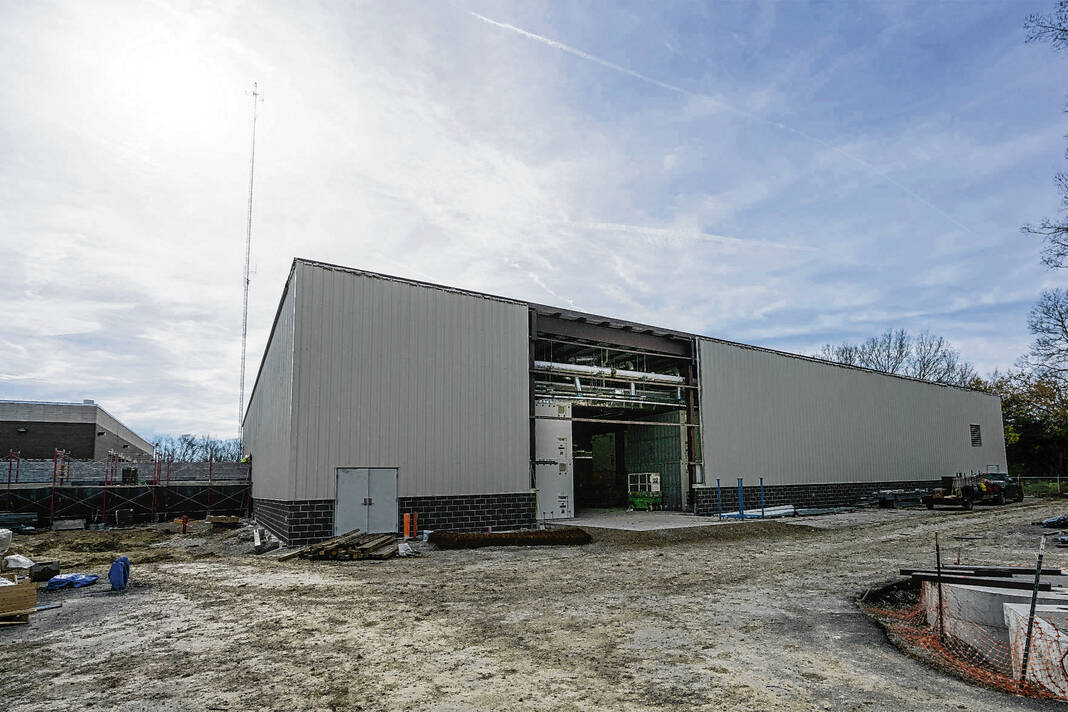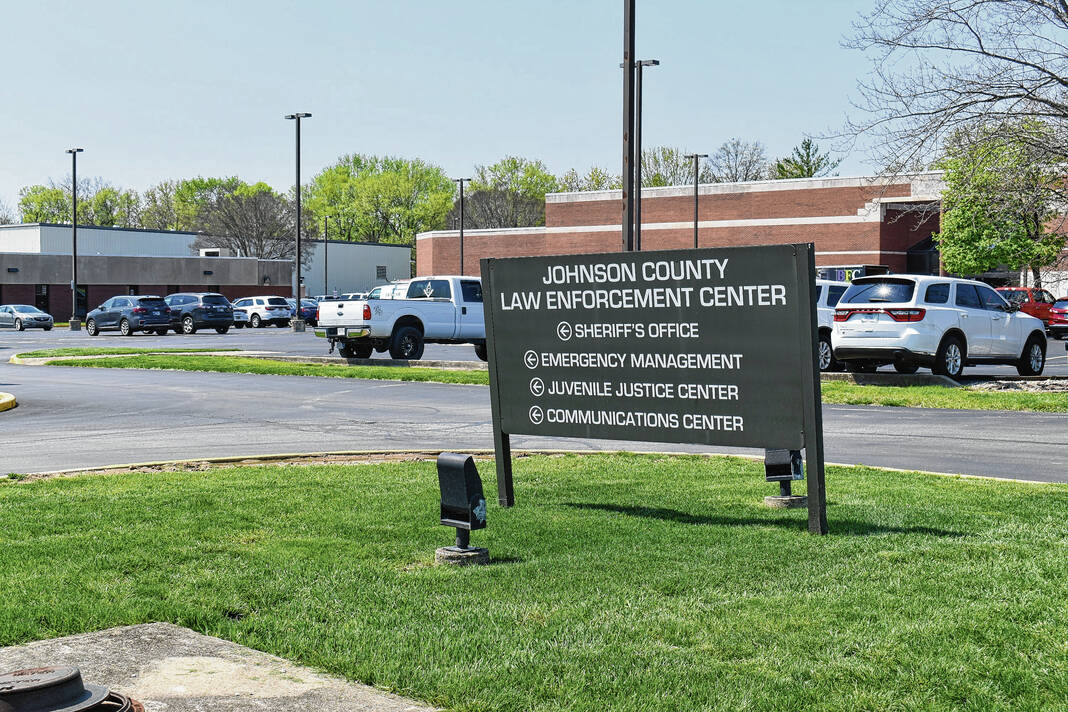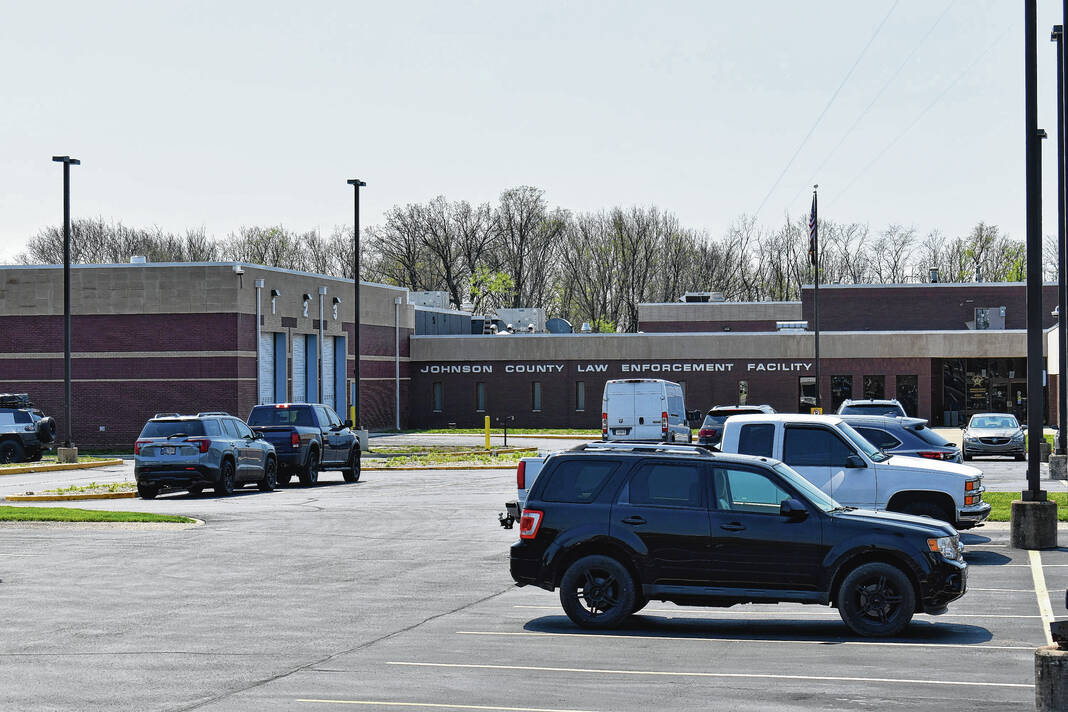The multi-million expansion of the Johnson County jail is nearly complete, with only one project outstanding before the main work is officially done.
The $23.1 million project to add 264 additional beds, a new intake area, an expanded medical center and more to the Johnson County Justice Center was first announced in 2019 and is designed to address frequent overcrowding issues the jail has had over the years. The facility was first built in 1977.
As the county’s population has increased, so has crime. The county had to renovate and restructure parts of the jail in response to a 1997 federal lawsuit. After the lawsuit, the jail was remodeled and a new wing was added that raised the jail’s capacity to 299 from 104 in 2002. But the population swelled further.
More beds were added in 2012 after an inspector with the Indiana Department of Correction found room for 23 more bunks at the request of Johnson County Sheriff Duane Burgess, who was jail commander at the time, and then-sheriff Doug Cox. Still, the 322-bed facility was often crowded with as many as 459 people incarcerated. In 2018, the state forced the county to take action, which led to the latest expansion, officials say.
With the latest expansion, the jail’s capacity has been upped to 586 beds. The new wing built as part of the expansion has a new command center to overlook new cell blocks and the inmate recreation area, along with a new break room for jail officers. Padded cells, more offices, and classroom spaces for classes and support groups has also been added.
Multiple renovation projects were also completed in the old wing, including additional pull-in bays for arresting officers, more office space for deputies to complete their reports, a streamlined intake area, an expanded medical center, a larger commissary and multiple virtual courtrooms.
The project is being paid for with a local income tax, or LIT, that took effect in October 2019. The 20-year tax increased the local income tax to 1.2% from 1% and impacts all workers who live in Johnson County, regardless of what county they work in.
Earlier this month, the construction company behind the expansion, Garmong Construction Services, came before the Johnson County Board of Commissioners to announce the end of the project. Tony Anderson, a representative of Garmong, told the commissioners on April 11 that despite working through the coronavirus pandemic and the related shutdown in early 2020, workers were still able to finish the project four months early and under budget, he said.
A contingency fund of $536,000 is being returned to the county. The funds were set aside for unexpected expenses and cost overruns, officials say.
County commissioner Kevin Walls, who was been involved with the project throughout its run, expressed his gratitude for the completion of the project at the April 11 meeting.
“You brought it (to completion) under budget, ahead of time. You can’t ask for anything more than that,” Walls said. “I appreciate you guys for what you did on this project.”
Burgess is happy to see the expansion completed. It’s a great thing for taxpayers that the project came in under budget, he said.
Whenever there’s a jail expansion, a lot has to happen, like inmates being moved, which takes time. Jail staff tried to be ahead of the game when it came to trying to assist Garmong with finishing the project, Burgess said.
“We had the right people in place to answer any questions that came up from those folks,” Burgess said.
With the expansion now mostly finished, the focus has turned to smaller renovation projects that can use funds from the jail LIT.
Right now, construction crews are working on a variety of projects, including enclosing an exterior staircase. The staircase is frequently used by employees to enter a certain part of the jail, and because it is exposed to the elements, there are times when the stairs would be icy — a safety hazard, Burgess said.
“We need to have those steps covered to eliminate any ice or anything that would build-up,” Burgess said.
The stair enclosure is not the only project underway. With the money left over from the expansion, Burgess is trying to make needed repairs to aging parts of the jail building. Parts of the jail were built as far back as the 1970s, so there are several items that need to be replaced, such as piping and electrical work, he said.
“Just like we have to renovate our homes, I’ve got to renovate … and keep things moving forward so hopefully when I’m done as sheriff, the next sheriff won’t have to spend as much time making these repairs,” Burgess said.
This work is constant right now. There are contractors working on some of the facility’s sinks and showers and replacing the older electrical lighting with LEDs, which will save money in the future, he said.
Burgess is also keeping his eye on future needs for the sheriff’s office down the road. One of those needs includes a possible expansion of the agency’s training center, which he’s asked both the commissioners and the county’s construction manager to look at.
Since Burgess first took office as sheriff in 2019, he’s looked at the number of training hours his staff has gone through and compared to when he first took office, the number of hours has basically doubled. He wants the sheriff’s office to eventually be able to have all the training done in-house, with some exceptions, he said.
The sheriff’s office, in conjunction with its partners, has started another crisis intervention team class, where officers from across the county learn about how they can help people with mental disorders and/or addictions access the treatment they need in a crisis, rather than place them in the criminal justice system. Another class was needed so more officers from across the county could attend, Burgess said.
Burgess wants training classes like this to continue, along with having a state-of-the-art facility, he said.
“I want the best-of-the-best for the officers so they can get the education,” Burgess said. “Training has been a big issue for the last couple of years, and it’s really been looked at by many legislators. We want to do what’s expected of us.”












